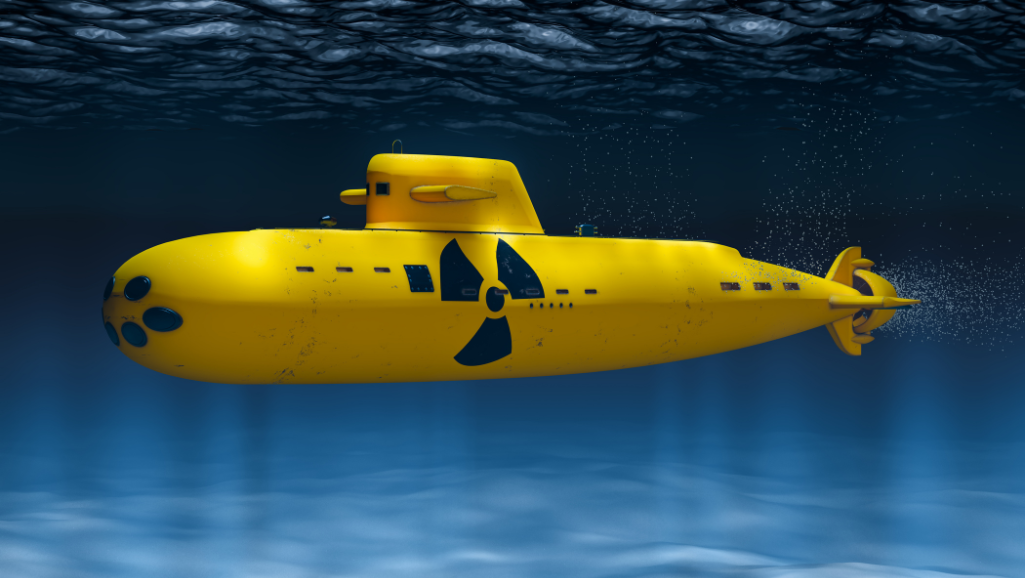Do you ever wonder how many nuclear powered ships exist worldwide? In this article, we will delve into the fascinating world of nuclear powered ships, examining their history, various types, and the major navies that utilize them. We will also explore the current number of these ships, as well as the advantages and challenges associated with their nuclear propulsion. Finally, we will discuss the future of nuclear powered ships and the potential advancements in this field. Let’s embark on this enlightening journey together.
History of Nuclear Powered Ships
Take a journey through the captivating history of nuclear-powered ships. Nuclear-powered ships have a rich history that dates back to the mid-20th century. The United States Navy played a significant role in the development and deployment of these technologically advanced vessels. The first nuclear-powered ship, the USS Nautilus, was launched in 1954. This groundbreaking submarine paved the way for many more nuclear-powered ships to come. The Nautilus set numerous records, including being the first vessel to reach the North Pole in 1958.
Following the success of the Nautilus, the United States Navy continued to invest in nuclear-powered ships. Aircraft carriers became a primary focus, with the USS Enterprise being the first nuclear-powered aircraft carrier commissioned in 1961. These vessels offered significant advantages over their conventional counterparts, including increased range, speed, and operational flexibility.
Other countries soon followed suit in developing nuclear-powered ships. The Soviet Union, now Russia, launched its first nuclear-powered icebreaker, the Lenin, in 1959. This marked the beginning of a new era in Arctic navigation.
In recent years, nuclear-powered ships have expanded beyond military use. Nuclear-powered icebreakers continue to play a crucial role in polar exploration and maritime operations. Additionally, there has been growing interest in using nuclear power for commercial shipping, with some countries exploring the possibility of nuclear-powered cargo vessels.
The history of nuclear-powered ships is a testament to human ingenuity and the continuous pursuit of technological advancements. These vessels have revolutionized naval operations and opened new possibilities for exploration and transportation on the high seas.
Types of Nuclear Powered Ships
To delve into the topic of ‘Types of Nuclear Powered Ships’, let’s explore the diverse range of vessels that harness nuclear power for propulsion and operation. Nuclear-powered ships are primarily used by navies for military purposes, such as aircraft carriers and submarines. These ships use nuclear reactors to generate heat, which is then converted into mechanical energy to propel the vessel. The advantages of nuclear power in ships include longer operational range, increased endurance, and reduced refueling requirements.
Here is a table showcasing the different types of nuclear-powered ships and their respective characteristics:
| Type of Ship | Purpose | Notable Examples |
|---|---|---|
| Aircraft Carrier | Deploying and supporting | USS Nimitz, HMS Queen Elizabeth |
| aircraft | ||
| Submarine | Underwater operations and | USS Virginia, HMS Astute |
| surveillance | ||
| Icebreaker | Breaking through ice-covered | NS Yamal, USCGC Polar Star |
| waters |
Aircraft carriers are the largest and most powerful of all nuclear-powered ships, capable of carrying and launching aircraft. Submarines are designed for stealthy underwater operations and surveillance. Icebreakers, on the other hand, are used to navigate through frozen waters, ensuring safe passage for other vessels.
Major Nuclear Powered Navies
Now let’s shift our focus to the major nuclear-powered navies around the world. These navies possess technologically advanced ships that are powered by nuclear reactors. Here are three of the most prominent nuclear-powered navies:
- United States Navy: The US Navy operates the largest and most diverse fleet of nuclear-powered ships in the world. With a fleet size of over 70 nuclear-powered vessels, including aircraft carriers, submarines, and cruisers, the US Navy maintains a formidable presence on the seas. Their nuclear-powered aircraft carriers, such as the Nimitz-class and the Gerald R. Ford-class, provide unrivaled power projection capabilities.
- Russian Navy: The Russian Navy is the second-largest nuclear-powered navy globally. It operates a substantial fleet of nuclear-powered submarines, including the famous Akula-class and the Borei-class. These submarines are equipped with advanced nuclear propulsion systems, enabling them to operate for extended periods and remain submerged for extended periods.
- British Royal Navy: Although smaller in scale, the British Royal Navy maintains a significant nuclear-powered fleet. Their Vanguard-class submarines are armed with Trident nuclear missiles, serving as the country’s primary nuclear deterrent. Additionally, the Royal Navy operates the Astute-class attack submarines, which are highly capable and versatile.
These major nuclear-powered navies demonstrate their commitment to maintaining a robust and technologically advanced maritime force.
Current Number of Nuclear Powered Ships
There are currently various nuclear-powered ships in operation worldwide. These ships are primarily used by major navies for military purposes, as nuclear propulsion provides numerous advantages over conventional power systems. The United States Navy operates the largest fleet of nuclear-powered ships, including aircraft carriers, submarines, and cruisers. The USS Enterprise, a nuclear-powered aircraft carrier, was the first of its kind and remained in service for over fifty years before being decommissioned in 2017. The U.S. Navy’s fleet also includes numerous nuclear-powered submarines, such as the Ohio-class ballistic missile submarines and the Virginia-class attack submarines. Other major navies with nuclear-powered ships include Russia, the United Kingdom, France, and China. Russia, in particular, has a significant number of nuclear-powered icebreakers, as it relies heavily on them for Arctic operations. While the exact number of nuclear-powered ships worldwide is constantly changing due to retirements and new constructions, it is estimated that there are currently around 150 nuclear-powered ships in operation globally. These ships play a vital role in enhancing naval capabilities and maintaining a presence in various strategic regions.
Advantages of Nuclear Propulsion
With nuclear propulsion, you can enjoy the benefits of increased power, efficiency, and endurance in your ship. Nuclear propulsion offers several advantages over traditional propulsion systems, making it a preferred choice for many naval vessels and submarines. Here are three key advantages of nuclear propulsion:
- Increased Power: Nuclear propulsion provides a significant increase in power compared to conventional engines. The energy released from nuclear fission reactions produces a greater amount of thrust, enabling ships to achieve higher speeds and maneuverability. This increased power allows for quicker response times and greater operational capabilities.
- Improved Efficiency: Nuclear propulsion is highly efficient, resulting in reduced fuel consumption and extended operational range. Unlike conventional engines that require frequent refueling, nuclear reactors can operate for long periods without the need for refueling. This improved efficiency minimizes downtime and allows ships to stay deployed for extended periods, ensuring continuous operations and mission success.
- Enhanced Endurance: Nuclear-powered ships have a distinct advantage when it comes to endurance. With their extended fuel supply and reduced dependency on external refueling, these ships can operate for months or even years without interruption. This enhanced endurance is particularly advantageous for long-distance deployments, military operations, and scientific research missions.
Challenges and Safety Concerns
Nuclear propulsion systems present unique challenges and safety concerns that must be carefully addressed in order to ensure the safe operation of nuclear-powered ships. One of the primary concerns is the potential for a nuclear accident, which could result in the release of radioactive material into the environment. To mitigate this risk, stringent safety measures are implemented throughout the design, construction, and operation of these ships. These measures include robust containment systems, redundant safety systems, and rigorous training programs for the crew.
Another challenge is the disposal of nuclear waste generated by these ships. Although nuclear-powered ships produce relatively small amounts of waste compared to nuclear power plants, the disposal of this waste still requires careful planning and adherence to strict regulations. Proper storage and disposal methods are essential to prevent any potential harm to humans and the environment.
Additionally, the maintenance and repair of nuclear-powered ships can be complex and expensive. Specialized expertise is required to handle the intricate nuclear systems, and regular inspections and maintenance are necessary to ensure their continued safe operation.
Future of Nuclear Powered Ships
The future of nuclear-powered ships holds great potential for advancements in maritime technology. As the world continues to seek more sustainable and efficient modes of transportation, nuclear-powered ships offer several benefits that make them an attractive option for the future:
- Reduced greenhouse gas emissions: Nuclear-powered ships do not rely on fossil fuels, which means they do not emit greenhouse gases during operation. This makes them a cleaner alternative to traditional ships, contributing to global efforts to combat climate change.
- Extended operational range: Nuclear-powered ships have the advantage of an extended operational range compared to conventional ships. Since they do not require frequent refueling, they can stay at sea for longer periods, enabling them to reach remote areas and undertake long-distance journeys without interruptions.
- Enhanced safety and reliability: Nuclear power provides a stable and reliable source of energy for ships. The safety features and redundancies built into nuclear reactor systems ensure that the risk of accidents is minimized. Additionally, the long lifespan of nuclear reactors reduces the need for frequent maintenance and replacements.
With ongoing advancements in nuclear technology and increased focus on sustainability, it is likely that we will see more nuclear-powered ships in the future. These ships have the potential to revolutionize the maritime industry by offering a greener, more efficient, and reliable mode of transportation.





